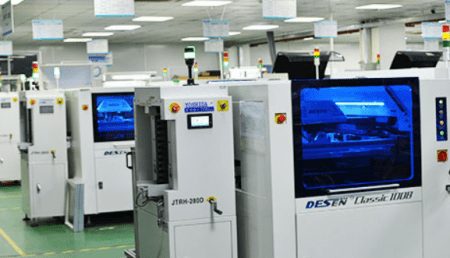- +86-755-23012705
- Building 3, Jinfeng Industrial Park, Fuyong Street, Baoan District, Shenzhen ,China
- [email protected]
In PCB design, it is required to select DC / DC or LDO for power chip design.

1、 Simply put, in the case of boost, only DC / DC can be used, because LDO is voltage drop type and cannot boost.
Selection of LDO
When the designed circuit has the following requirements for shunt power supply.
At this time, LDO is the most appropriate choice to meet various requirements of product design.
DC/DC: High efficiency and high noise; the advantage is that the conversion efficiency is high, and the current can be large, but the output interference is large, and the volume is relatively large.
LDO: low noise, low quiescent current; small size, less interference, when the input and output voltage difference is larger, the conversion efficiency is low.
Therefore, if it is used in the case of a relatively large voltage drop, choose DC/DC because of its high efficiency, and the LDO will lose a large part of its efficiency due to the large voltage drop.
If the voltage drop is relatively small, choose LDO because of its low noise, clean power supply, simple peripheral circuits and low cost.
LDO is a low dropout regulator, which means a low dropout linear regulator, which is relative to the traditional linear regulator. Traditional linear regulators, such as 78xx series chips, require the input voltage to be higher than the output voltage by more than 2V~3V, otherwise it will not work properly. But in some cases, such conditions are obviously too harsh, such as 5v to 3.3v, the pressure difference between input and output is only 1.7v, which obviously does not meet the conditions. In response to this situation, there is an LDO type power conversion chip.
LDO Linear Step-Down Chip: The principle is equivalent to a resistor divider to achieve a step-down. The energy loss is large, and the dropped voltage is converted into heat. The greater the pressure difference and load current of the step-down, the more obvious the chip heats up. The package of this type of chip is relatively large, which facilitates heat dissipation.
LDO linear step-down chips such as 2596, L78 series and so on.
DC/DC Step-Down Chip: In the step-down process, the energy loss is relatively small, and the chip heating is not obvious. The chip package is relatively small and can realize PWM digital control.
DC/DC step-down chips such as TPS5430/31, TPS75003, MAX1599/61, TPS61040/41.
Generally speaking, in PCB design, DCDC must be selected for step-up, and whether DCDC or LDO is selected for step-down should be compared in terms of cost, efficiency, noise and performance. The key is specific application and specific analysis.






XPCB Limited is a premium PCB & PCBA manufacturer based in China.
We specialize in multilayer flexible circuits, rigid-flex PCB, HDI PCB, and Rogers PCB.
Quick-turn PCB prototyping is our specialty. Demanding project is our advantage.
Tel : +86-136-3163-3671
Fax : +86-755-2301 2705
Email : [email protected]
© 2024 - XPCB Limited All Right Reserve
